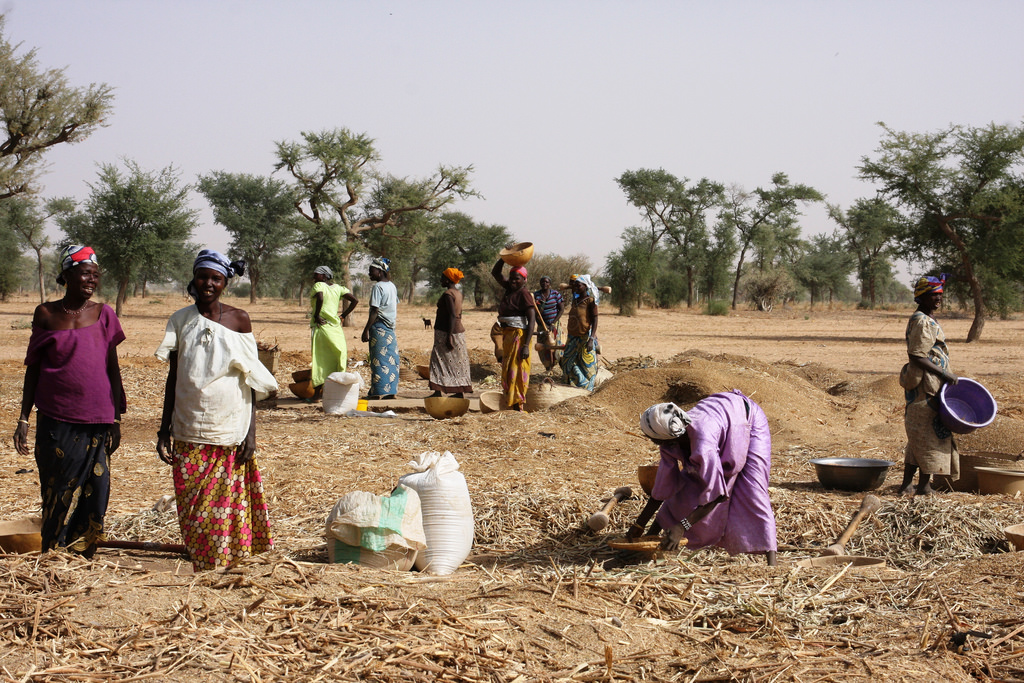“Human health is vulnerable to climate change”
January 23rd, 2016 Children are among the victims of the health impacts of climate change, writes Fariya Abubakari, 26, a Commonwealth Correspondent from Bawku, Ghana, who argues policy and action are needed to avert suffering.
Children are among the victims of the health impacts of climate change, writes Fariya Abubakari, 26, a Commonwealth Correspondent from Bawku, Ghana, who argues policy and action are needed to avert suffering.
Mr. Koglo, a 40-year old man, hailed from Nangodi in the Upper East Region of Ghana, where the region’s high temperatures have had a negative effect on residents’ health. He trades across Ghana with his two children, supplying electrical cables. He never went to school but hoped to see his two children educated. In order to achieve that, he works hard and aims high for his children. This hope soon faded, because he woke one morning to find his two children in a bad state. Mr. Koglo rushed them to the hospital, only to be told his children were diagnosed of malaria and Cerebral-Spinal Meningitis (CSM). The cases were so severe they couldn’t be treated. It was so sad for Mr. Koglo to be told the next morning that his children passed on.
This story illustrates how climate change, including climate variability, has multiple influences on human health in Ghana. It is among the factors that determine the range and incidence of malaria, diarrhea, and Cerebral-Spinal Meningitis (CSM). The meningitis belt cuts across Ghana, where humidity, land cover type and population densities are independently associated with meningitis epidemics.
Analysis from the World Health Organization indicates that climate change could increase the number of cases of malaria and diarrheal diseases up to five per cent worldwide. Besides the increase in water- and airborne diseases, predictions are for negative health impacts from water scarcity and increased risk of natural disasters such as floods and droughts in Ghana.
Extreme high temperatures contribute directly to deaths from cardiovascular and respiratory disease, particularly among elderly people. Raised levels of ozone and other pollutants create the problem, while pollen and other aeroallergen levels raised by extreme heat can trigger asthma.
Floods are increasing in frequency and intensity in Ghana. They contaminate fresh water supplies, heighten the risk of water-borne diseases and create breeding grounds for disease-carrying insects such as mosquitoes. They also cause drowning and injury, damage homes and disrupt the supply of medical services.
It has already been estimated that by 2060, between 40 and 200 million people will be expected to go hungry due to climate change because of variability in agricultural production and food availability, which may lead to an increased risk of malnutrition. Agriculture – including fisheries, cocoa, cereals, and root crops production – and water resource sectors as well as human health, poverty, and women’s livelihoods are affected by climate change and climate variability.
Ghana produces a variety of crops in various climatic zones, which range from dry savanna to wet forest. Extreme weather events may result in the reduction of farmlands and availability of foodstuff. Scarcity of food and increased cost of local food items may cause malnutrition, thus opening the way for infection through increased susceptibility.
When the duration of drought is long and severe, stored seed grain for planting is eaten, leaving little for planting in the next season. This is just one way in which malnutrition and increased susceptibility to infectious disease is perpetuated over a longer time period. The groups most vulnerable to malnutrition in Ghana, as elsewhere in Africa, will be children and women.
Protein Energy Malnutrition is the most widespread and serious nutritional disorder in Ghana, especially among children. It is manifest by stunting, wasting and underweight. By 2080, projections indicate that the mean air temperature will be 27.6 degrees centigrade and above, which is likely to significantly increase the malaria burden in the absence of adaptative measures. Malnutrition is known to be widely prevalent among women and children, and has been identified as a major contributory factor to high maternal morbidity and mortality.
Despite the increasing understanding of health risks associated with climate change in Ghana, there has been limited implementation of strategies and policies to protect the health of the most vulnerable populations.
Reasons for this include the relatively recent appreciation of the links between climate change and health, which means that existing public health policies and practices globally do not reflect the needs of managing climate change-related health impacts. I therefore urge the government of Ghana to implement policies and strategies to protect the health of vulnerable Ghanaians such as Mr. Koglo’s children.
photo credit: Mothers Understand And Can do it (MUAC): mother-driven detection of malnutrition in Niger via photopin (license)
…………………………………………………………………………………………………………………
About me: I am from Bawku in the Upper East Region of Ghana, where I am the Country Coordinator of End Ecocide Ghana, a soil scientist and a climate tracker activist who writes about Ghana’s role in international climate negotiations. I am a graduate student of Kwame Nkrumah University of Science and Technology and love researching, reading, writing and cooking.
…………………………………………………………………………………………………………………
Opinions expressed in this article are those of the author and do not necessarily represent the views of the Commonwealth Youth Programme. Articles are published in a spirit of dialogue, respect and understanding. If you disagree, why not submit a response?
To learn more about becoming a Commonwealth Correspondent please visit: http://www.yourcommonwealth.org/submit-articles/
…………………………………………………………………………………………………………………




